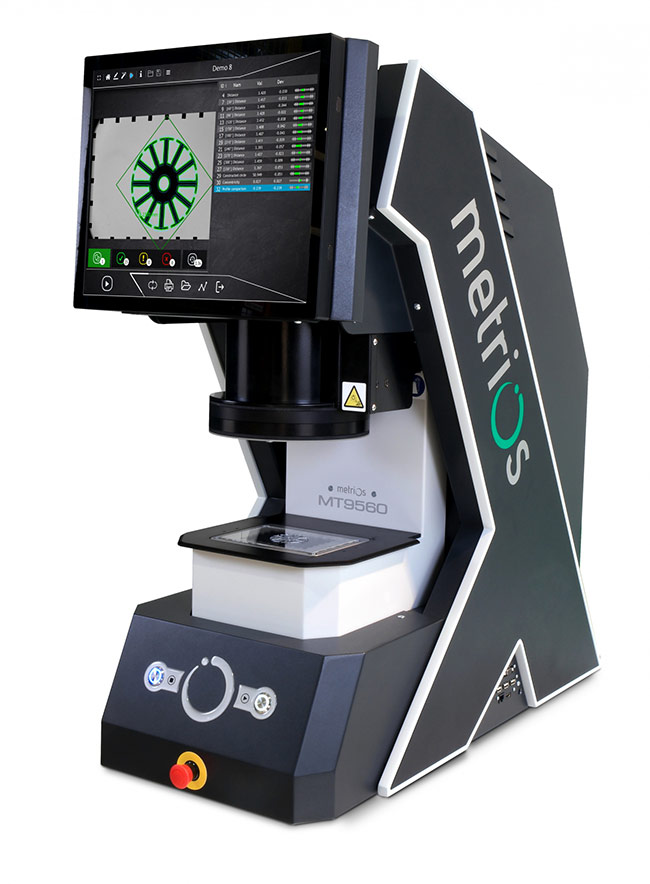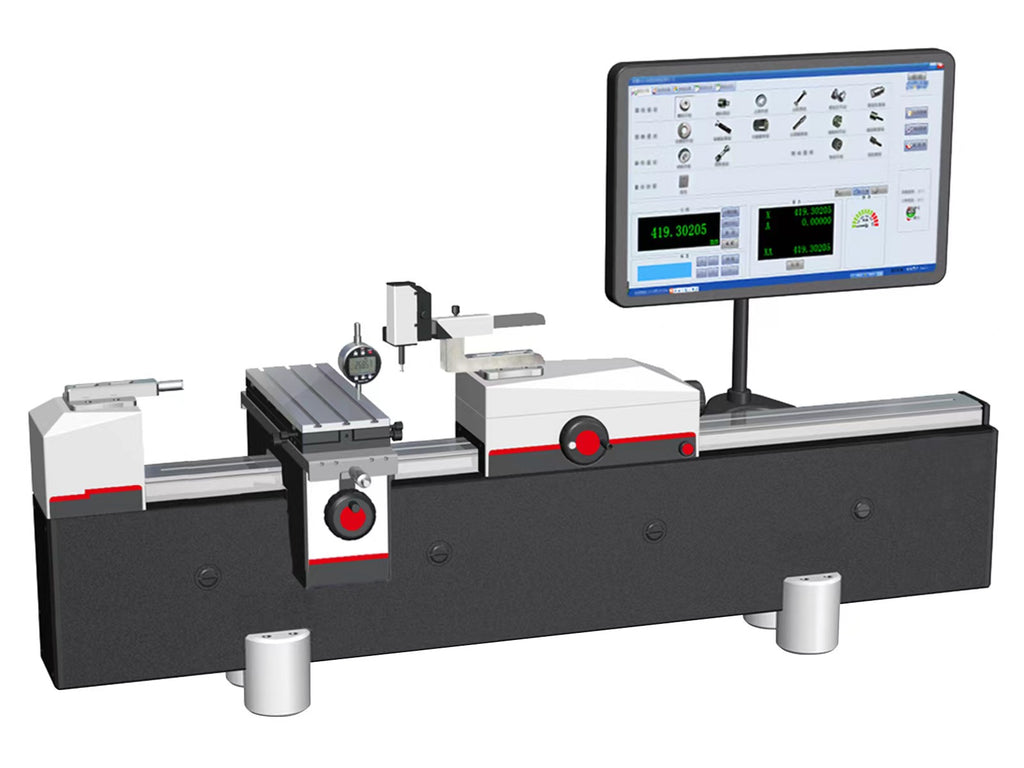The Role of Optical Dimension Systems beforehand Assessment Strategies
Optical measurement systems have transformed assessment, bringing a level of precision that was as soon as unimaginable. As you check out additionally, you'll discover exactly how these systems are forming the future of measurement and top quality control.
The Evolution of Width: A Historic Viewpoint
As you check out the history of assessment, you'll find that its advancement mirrors humanity's pursuit for accuracy and standardization. From old worlds utilizing body parts as systems of measurement to the advancement of standardized weights and measures, each step shows our desire for precision. The Egyptians developed the pyramids making use of precise measurements, while the Romans progressed engineering with their advanced measuring tools.
Throughout the Renaissance, clinical advancements changed the focus towards a lot more empirical methods, paving the method for contemporary width. The intro of the metric system in the late 18th century marked a substantial turning point, establishing universal requirements. Throughout the 20th century, technical innovations better transformed assessment, allowing highly accurate measurements in different fields.
Today, metrology proceeds to evolve, incorporating electronic technology and automation. This background highlights not simply the importance of measurement however likewise our unrelenting search of boosting accuracy and uniformity in our progressively complex globe.
Concepts of Optical Measurement Equipments
Recognizing the concepts behind optical measurement systems is essential for precise lead to width. You'll intend to think about essential optical concepts, dimension precision aspects, and effective system calibration techniques. Each of these components plays a crucial function in ensuring your dimensions are precise and trustworthy.
Essential Optical Principles
While exploring optical dimension systems, you'll come across essential optical concepts that develop the backbone of accurate data purchase. Light behaves in predictable methods, and recognizing these habits-- like reflection, refraction, and diffraction-- is crucial for efficient measurements. By understanding these concepts, you'll be geared up to utilize optical innovations successfully, leading the method for innovations in metrology and guaranteeing your dimensions are both reputable and repeatable.
Measurement Precision Elements
To achieve high measurement precision in optical systems, numerous variables come into play, influencing the integrity of your results. First, the top quality of the optical components matters significantly. High-quality lenses and detectors reduce aberrations and sound, guaranteeing your dimensions are accurate. Second, environmental problems like temperature and humidity can influence measurements, so preserving a stable atmosphere is necessary. Third, the positioning of the optical system is critical; also minor misalignments can cause considerable mistakes. Ultimately, the wavelength of light used impacts the resolution and accuracy of your measurements. By resolving these variables, you can enhance the total efficiency of your optical measurement systems, bring about more precise and trustworthy lead to your metrology applications.
System Calibration Strategies
Achieving high dimension precision is just part of the equation; correct system calibration strategies are just as important in optical dimension systems. To guarantee your system supplies trustworthy results, you ought to routinely adjust it making use of conventional reference materials. Begin by changing the optical elements, like lenses and mirrors, to minimize systematic errors. Next off, employ well-known measurements to confirm the system's result and make required improvements. It's additionally crucial to make up environmental factors-- temperature and moisture can affect measurements. Implement a routine calibration routine to maintain uniformity in time. Document all calibration treatments and results; this will assist you track efficiency and resolve any drift in accuracy. With these methods, you'll enhance the dependability of your optical measurement system.
Trick Technologies Behind Optical Measurement
Optical dimension systems depend on several crucial technologies that improve accuracy and performance in width. One crucial technology is interferometry, which utilizes the interference of light waves to gauge little variations and surface area abnormalities with severe accuracy. You'll additionally locate laser scanning systems, which catch detailed 3D data of objects swiftly, making them invaluable for dimensional analysis.
Furthermore, CCD and CMOS sensing units play a significant role in converting light right into electrical signals, enabling for high-resolution imaging and precise dimensions. Advanced algorithms for photo processing even more boost dimension precision by analyzing information in actual time, removing sound and boosting features.
Lastly, optical fiber offer flexibility and the ability to gauge in challenging atmospheres while keeping signal stability. By leveraging these technologies, you can attain superior lead to your metrology jobs, ensuring that your measurements are both trusted and precise.
Applications of Optical Measurement in Market
As industries increasingly demand precision and efficiency, the applications of optical dimension systems have actually become crucial across numerous markets. In manufacturing, these systems assist you keep an eye on measurements and resistances in real-time, making certain quality assurance without lengthy hands-on checks. In the vehicle market, optical dimensions assist in aligning elements with accuracy, boosting security and performance.
In electronic devices, you're making use of optical techniques to inspect min features on circuit boards, finding flaws that can result in failures. The aerospace sector benefits from non-destructive testing methods, allowing you to examine products and parts without jeopardizing their integrity.
Optical dimension additionally plays a vital role in textiles, ensuring fabric dimensions fulfill exact specs. optical measurement system. With their capability to supply high-resolution information promptly, these systems equip you to make educated choices, improve procedures, and inevitably drive innovation across your sector
Enhancing Accuracy and Effectiveness in Measurements
When you think of enhancing precision in dimensions, accuracy in your dimension techniques is essential. By enhancing these processes, you can accomplish quicker outcomes without sacrificing high quality. Let's check out just how adopting advanced optical measurement systems can raise both accuracy and efficiency in your work.
Accuracy in Measurement Strategies
Precision in dimension techniques is essential for accomplishing reputable outcomes in metrology, especially since little discrepancies can lead to substantial mistakes. By making use of advanced optical measurement systems, you can improve the accuracy of your measurements. he said In enhancement, specific measurements enable you to preserve quality control, guaranteeing that products meet rigorous specifications.
Simplifying Dimension Processes
To enhance precision and effectiveness in measurements, enhancing your measurement processes is necessary. Beginning by embracing optical measurement systems that provide real-time information, minimizing the time invested on hands-on recording. These systems often integrate seamlessly with existing software program, allowing you to automate information collection and evaluation.
Next, systematize your measurement procedures. By applying constant procedures, you minimize variability and enhance repeatability. Don't fail to remember to on a regular basis adjust your equipment to guarantee its precision.

The Effect of Optical Dimension on Research Study and Advancement
As researchers undertaking to push the boundaries of development, optical dimension systems have actually become crucial tools in the advancement procedure. These systems provide you with accurate, real-time data that improves your capacity to evaluate complicated materials and structures. In different areas, from biotechnology to aerospace, you depend on optical dimensions to improve and optimize styles item performance.

With high-resolution imaging and non-contact techniques, you can minimize example disruption, allowing for more accurate outcomes. This ability to capture minute details accelerates your R&D cycle, letting you repeat designs quickly and efficiently. Optical dimension cultivates cooperation across disciplines, as the data created is often easily interpretable and shareable.
Eventually, integrating optical measurement systems into your study not just enhances productivity yet additionally grows your understanding of the phenomena you study. By leveraging these innovative strategies, you're much better furnished to innovate and stay in advance in an affordable landscape.
Future Trends in Optical Measurement Systems
With the quick advancement of technology, you're likely to see substantial changes in optical measurement systems that will certainly redefine their application throughout different markets. You'll observe an approach boosted automation and integration of expert system, permitting real-time data evaluation and enhanced precision. Miniaturization is one more pattern; compact tools will make it possible for measurements in tighter areas, making them perfect for areas like aerospace and biomedical applications.
In addition, the advent of advanced products, such as photonic crystals, will boost sensitivity and resolution. Anticipate to see systems that can operate in tough atmospheres, giving trusted dimensions in extreme conditions. Cloud-based analytics will certainly also play an essential duty, providing you accessibility to large datasets for better decision-making. As these modern technologies assemble, you'll locate that optical measurement systems not only boost accuracy yet also enhance workflows, inevitably driving development and performance in your projects.
Regularly Asked Concerns
How Do Optical Measurement Equipments Compare to Standard Dimension Techniques?
Optical this content dimension systems use greater precision and faster results compared to traditional techniques. You'll discover they record even more information factors precisely, lowering human error and boosting integrity, making them a recommended option in numerous applications.
What Industries Advantage The Majority Of From Optical Dimension Equipments?
You'll find industries like aerospace, automotive, and electronics profit most from optical dimension systems. These sectors count on specific dimensions to assure top quality and efficiency, boosting effectiveness and minimizing expenses with advanced technology.

Are Optical Measurement Equipments Expensive to Execute?
Optical measurement systems can be expensive to apply, however their accuracy and effectiveness frequently justify the cost. Buying such technology can bring about significant lasting cost savings and renovations in high straight from the source quality throughout different applications.
What Skills Are Needed to Run Optical Measurement Equipments?
To operate optical dimension systems, you'll need strong analytical abilities, interest to information, and efficiency in software program tools. Knowledge with optics and an understanding of measurement concepts will certainly also improve your performance and effectiveness.
Just How Do Environmental Aspects Influence Optical Measurements?
Environmental variables like moisture, temperature, and air top quality can misshape optical dimensions. You'll notice variations in precision as a result of light interference or refraction. optical measurement systems. Maintaining steady conditions is necessary for dependable and accurate optical measurement results
Final thought
In summary, optical measurement systems are reinventing width by providing unrivaled precision and effectiveness. By utilizing sophisticated concepts and innovations, these systems improve accuracy while reducing disturbances in different industries. As you check out future trends, you'll see how the assimilation of AI and automation will continue to boost dimension methods, driving technology and boosting high quality control. Accepting these improvements will certainly be necessary for remaining competitive and achieving quality in your area.
Achieving high dimension accuracy is just component of the equation; proper system calibration strategies are similarly important in optical dimension systems.When you believe regarding enhancing precision in measurements, accuracy in your measurement methods is vital. By utilizing innovative optical measurement systems, you can boost the accuracy of your measurements.To boost accuracy and effectiveness in dimensions, enhancing your measurement procedures is important. Just How Do Optical Dimension Systems Contrast to Standard Dimension Techniques?
Comments on “What industries gain the most advantages from using optical measurement systems?”